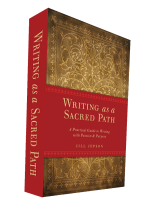 I read on two levels. On the one hand, I’m a reader, along for the ride, lost in the story. Meanwhile, another part of me steps back, asks questions, and analyzes. Why does the author introduce this plot point here? Why did he include this detail? How is she keeping the pace lively? What techniques are being used here. Are they working?
I read on two levels. On the one hand, I’m a reader, along for the ride, lost in the story. Meanwhile, another part of me steps back, asks questions, and analyzes. Why does the author introduce this plot point here? Why did he include this detail? How is she keeping the pace lively? What techniques are being used here. Are they working?
Get my free ebooklet: Calling Up the Writer Within: A Short Guide to Writing at 50 & Beyond here.
It might sound as if these two levels of reading would interfere with each other, but they actually complement one another. The writer side deepens the reader’s appreciation. The reader side reminds the writer of the bottom line: Regardless of how technically dazzling this is, if I’m not enjoying it, it’s not working.
Reading as a reader and writer at the same time has been the best education I could possibly get for my own writing. It has helped me identify ways to sharpen, deepen, and enrich my work.4
Recently, I have been reading Donna Tartt’s novels from these two perspectives. Tartt’s work is interesting because readers have such different responses to it. Many reviewers hated her 2014 novel The Goldfinch. One said it was “ungainly, dull and shockingly unimaginative.” Another called it “crap.” That didn’t stop other reviewers from raving—and it didn’t keep the novel from winning the Pulitzer Prize. Even among my own friends, there were some who adored the novel, some who detested it, and everything in between.
I’m not going to weigh in here about where I stand on the love/hate continuum with respect to Tartt’s work. Instead, I’m going to approach her novels as a writer and ask, What can I learn here?
What I have learned from Donna Tartt—the thing that I think she does stunningly, the thing that has made me think twice about my own writing—is to use sharp, unusual similes to bring characters to life.
Think of the way many of us writers describe characters. Mary was smart and competent, dressed in high heels and a stylish suit. Tod had a mop of dark hair and piercing blue eyes. The old man was bent and gray, and hobbled up the street in his worn overcoat. The child’s face was fresh as a spring day.
Most of us struggle to move beyond these boring descriptions. We might get a bit more creative than fresh as a spring day, but how often do we find truly original ways of depicting the characters who people our work?
Take a look at how Tartt does it:
“while he spoke English fluently enough…there was also a dark, slurry undercurrent of something else: a whiff of Count Dracula.” (The Gold Finch)
“she was as glossy and nervy and stylish as a racehorse.” (The Gold Finch)
“[he had] a small, wise face, as alert and poised as a question.” (The Secret History)
“he walked stiffly…with the self-conscious formality of an old ballerina.” (The Secret History)
“[he wore a] black greatcoat that billowed behind him as he walked and made him look like a cross between a student prince and Jack the Ripper.” (The Secret History)
Count Dracula, racehorses, questions, old ballerinas, student princes, Jack the Ripper. I notice three things about these descriptions:
1. Tartt doesn’t tell us how her characters look, sound, walk, or dress: She creates vivid pictures through similes.
2. The similes are surprising and unexpected. No “thin as a bird,” “light as a feather,” “cool as a cucumber” here.
3. The similes aren’t just strange, they are also vivid. They get the reader to picture exactly what Tartt is describing. When I hear a woman described as “glossy and nervy and stylish as a racehorse,” the picture in my mind is unique and specific.
Perhaps we can’t all come up with such unusual and precise similes for our characters. But we can all try. We can learn from Tartt’s technique, and our writing will be the stronger for it.
What have you learned from your favorite (or not so favorite) authors? What techniques have you brought into your own writing? What have do decided not to do?